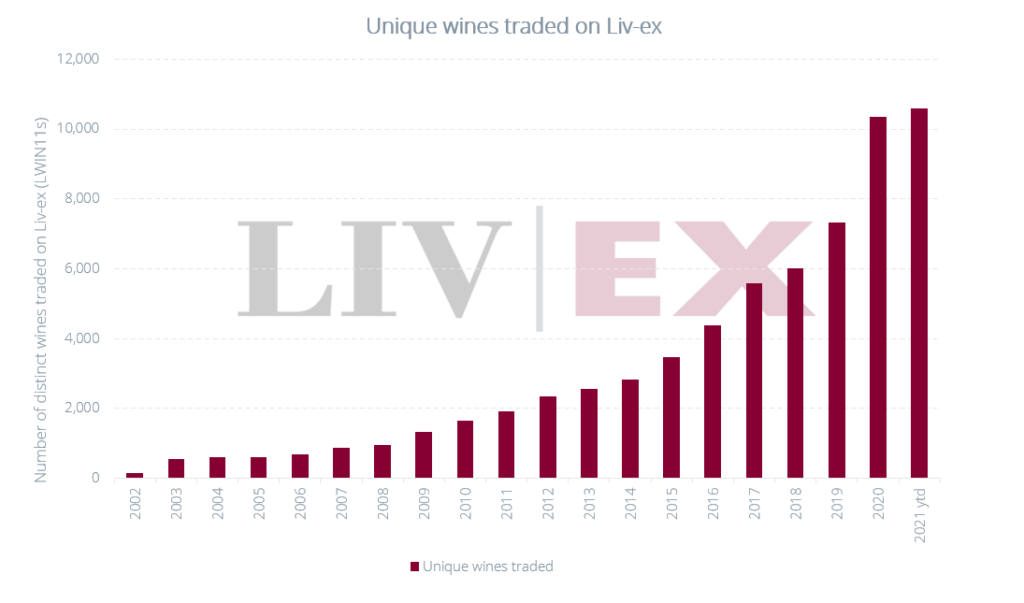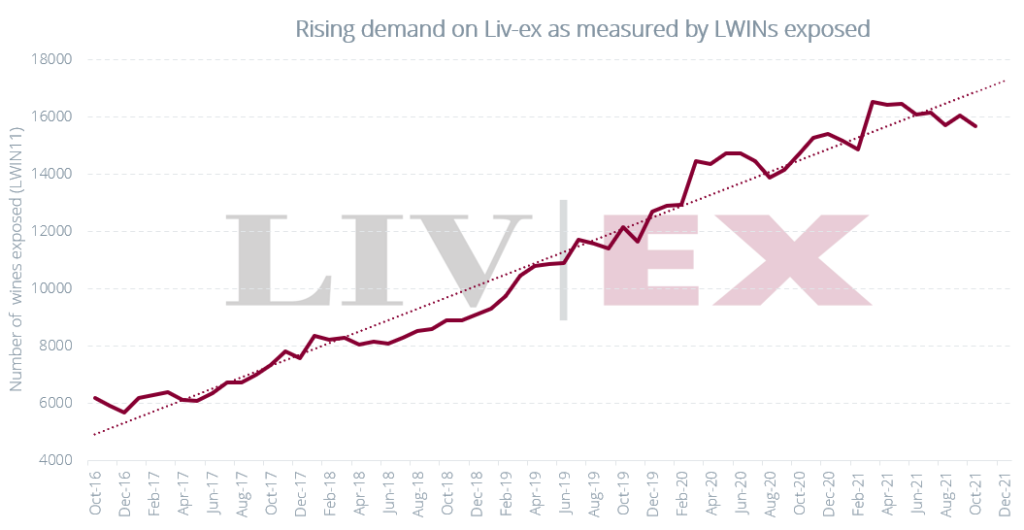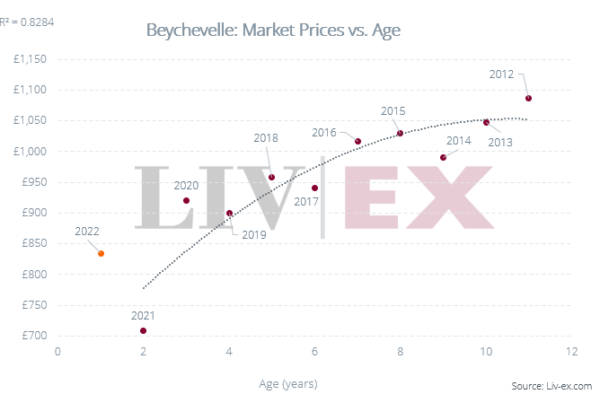More wines than ever are trading on the secondary market, highlighting the broadening scope of what constitutes a fine wine.
- Over 10,600 different wines and spirits have traded on Liv-ex year-to-date.
- There have been firm commitments to buy or sell on 16,000 wines each month in 2021.
- This all-time high for the fine wine market is a sign of its continued expansion.
The definition of ‘fine wine’ is broadening
So far this year, 10,603 different wines and spirits have traded on the global marketplace, a 2.4% increase on the whole of 2020. This number is almost seven times higher than a decade ago.
Does this reflect a broadening definition of what is considered ‘fine wine’? The fine wine market is certainly moving beyond just Bordeaux, which has been best demonstrated in regional trade share.
Wines from various winemaking regions, large and small, now trade on the secondary market – from Spain’s Balearic Islands to Aconcagua in Chile, and from the Palatinate in Germany to Calabria and Campania in Italy.
Non-traditional wine regions such as these are gaining momentum at the expense of the established forces that shaped the market in its first decades.
Though numbers remain tiny in comparison to more established fine wine regions like Bordeaux and Burgundy, smaller regions have demonstrated potential for faster growth. One such case is the UK, which has more than doubled the number of wines and spirits traded on Liv-ex on last year (from 14 to 32).
This broadening of the market is not just across new regions but also within existing ones too. As recently explored, Burgundy has seen the biggest increase in wines trading year-to-date, as well as being the region with the highest number of wines trading.
Burgundy exemplifies the case of diversification within the region itself, as buyers seek value among different price tiers which enables new domains to enter the secondary market.
Rising demand for variety
The chart above shows the increasing exposure on Liv-ex over the past five years. Total exposure refers to the number of wines with either a firm commitment to buy (a bid) or sell (an offer) by one of our merchant members on the trading platform.
On average, over 16,000 different wines have had a firm commitment to buy or sell this year – more than ever before. The rise in trading activity is a result of increased demand from our merchant members, which has been on the up in 2021.
How we calculate the number of wines trading
In this article, an individual wine is defined by an LWIN11 (our product code that represents a wine with a vintage e.g. Lafite Rothschild 2010).
LWIN – the Liv-ex Wine Identification Number – is a universal identifier for wine and spirits. It’s a lot like ISBN for books. Each wine or spirit has a unique number which can be counted. By counting numbers rather than names, errors are reduced, and reporting is simplified.
Liv-ex analysis is drawn from the world’s most comprehensive database of fine wine prices. The data reflects the real time activity of Liv-ex’s 530+ merchant members from across the globe. Together they represent the largest pool of liquidity in the world – currently £80m of bids and offers across 16,000 wines. Independent data, direct from the market.
Not a member of Liv-ex? Request a demo to see the exchange and a member of our team will be in touch with you shortly.






